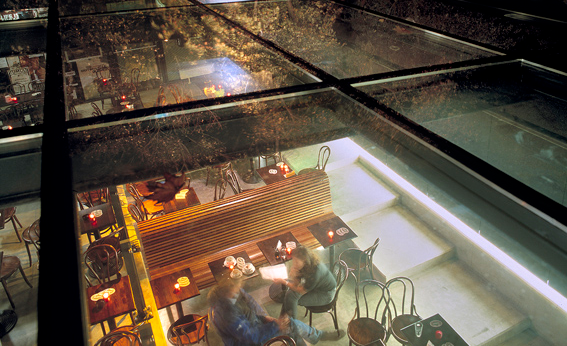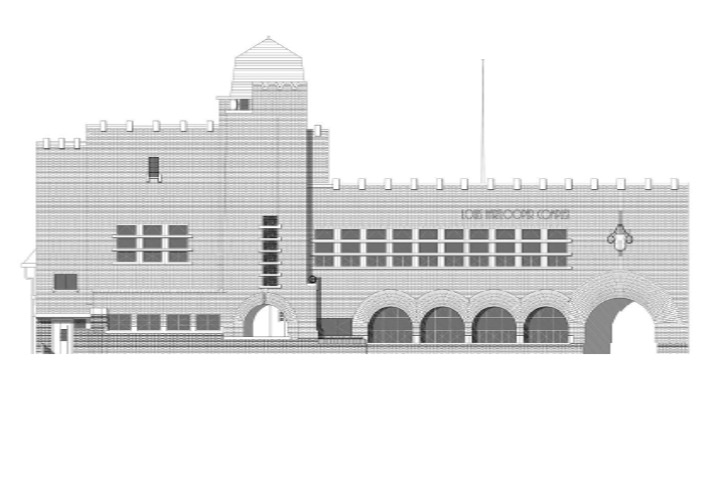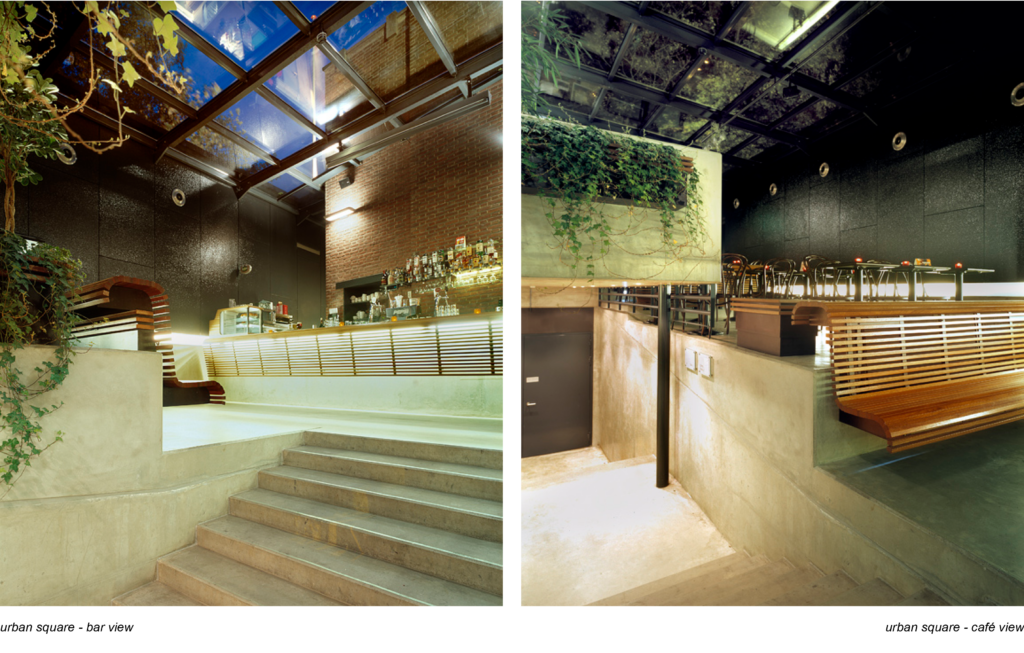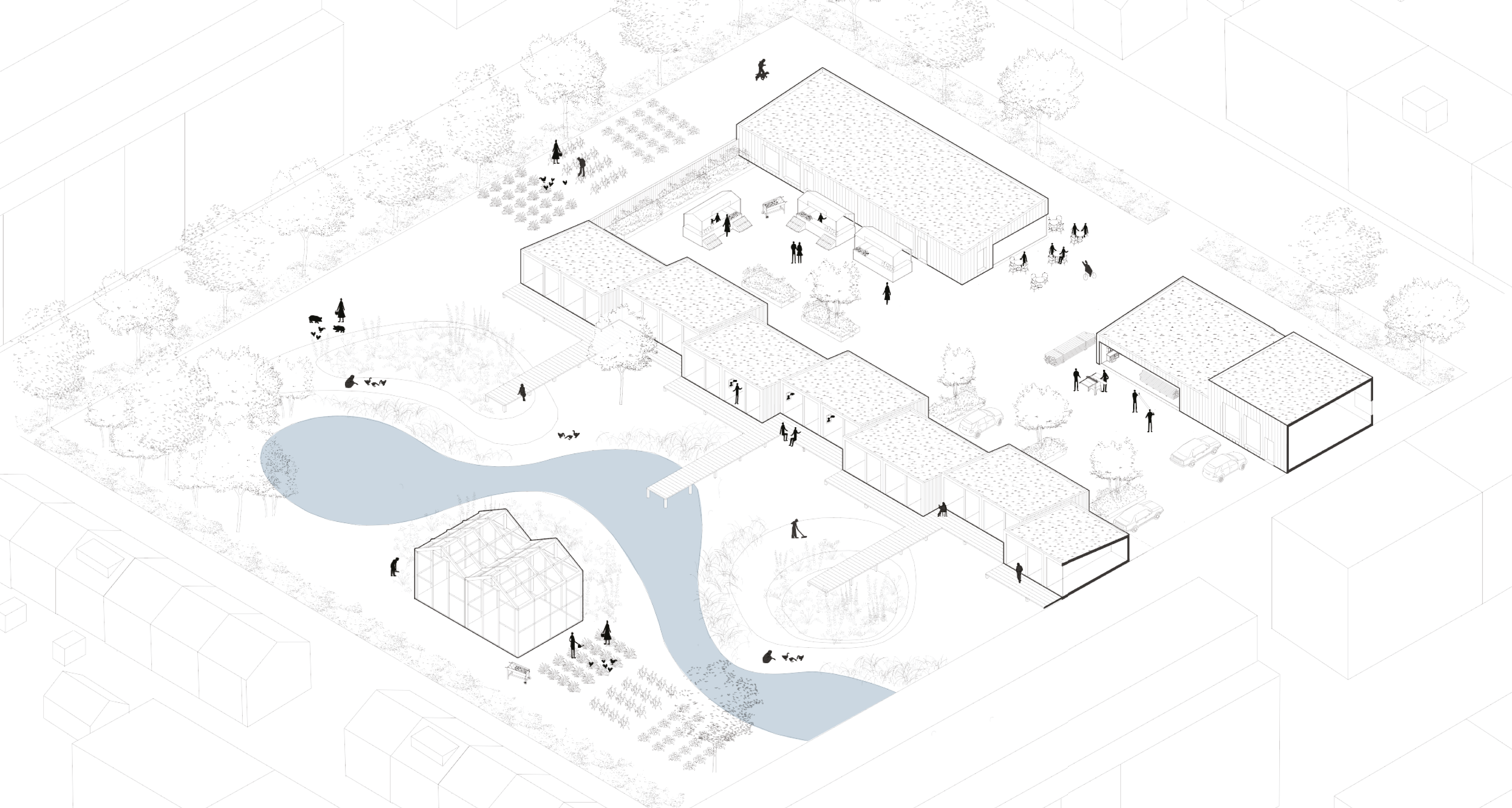
Arthouse Cinema in police station
Utrecht, NL | 2004 | Completed transformation | Cinema, public space, contrast between existing and new | transformation & new build | Public
National Renovation Prize for Monuments 2005
The former police station Tolsteegbrug was build in 1928 based upon a design of architect Planjer. The building is regarded as a typical example of the ´Amsterdamse School´, a Dutch design movement, and mainly because of this awarded with the status of Federal Monument. Situated at a striking spot, once the place where the medieval city gate offered access to town. The building is part of the ´Museums Quarter´, a historic part of town where municipal policy focuses on reinforcing and extending cultural and educational functions and providing public access to the cultural heritage of the build environment.
With the transformation of the police station Tolsteegbrug into a center for movie and culture, the ´Louis Hartlooper Complex´ becomes meeting place for producers, associations, companies, schools and other interested parties dealing with movie and culture.
Activities consist of workshops, festivals, lectures, discussions, exhibitions and of course film performance. A number of bar facilities are positioned in the building. The varied program demands for flexibility in use of the building. Needs in particular are multi functional spaces and varied scenarios for routing.

The ground floor of the present building contains a salon, conference room, bars, sanitary units, kitchen and a gallery. The first floor contains two halls and office spaces. The second floor has various office spaces and meeting room. A newly added construction part contains two halls and a foyer.


The two story structure in the present courtyard provides in the program’s space demand and forms the new heart of the Louis Hartlooper complex, a central space where everyday life enrolls itself. The space is inviting, accessible, exceptional but still common. This multi-use meeting point forms an enlargement of the city’s public space, and functions as extension of the Ledig Erf. A new urban square equipped with a glazed roof suggesting the sense of a semi outdoor space. The game of encounter is directed by offering various spots and levels.

Construction parts are contrasting in formal language and materialization. Where the present building offers a classic monumental and orthogonal composition, the new part forms an object folding itself literally to function and context. Where the present building is erected in red brick, the new part wears a bumpy black skin finished with a polyurethane coating. Construction parts demonstrate themselves as autonomous buildings along the inner square, in this capturing an intermediate position.
Following this concept, bringing back into sight the original identity of the building’s authentic architecture is an important part of the renovation. This has been achieved through careful conservation and restoration of authentic detailing and materials. Also color-schemes are brought back into the design with great attention to the original details.


